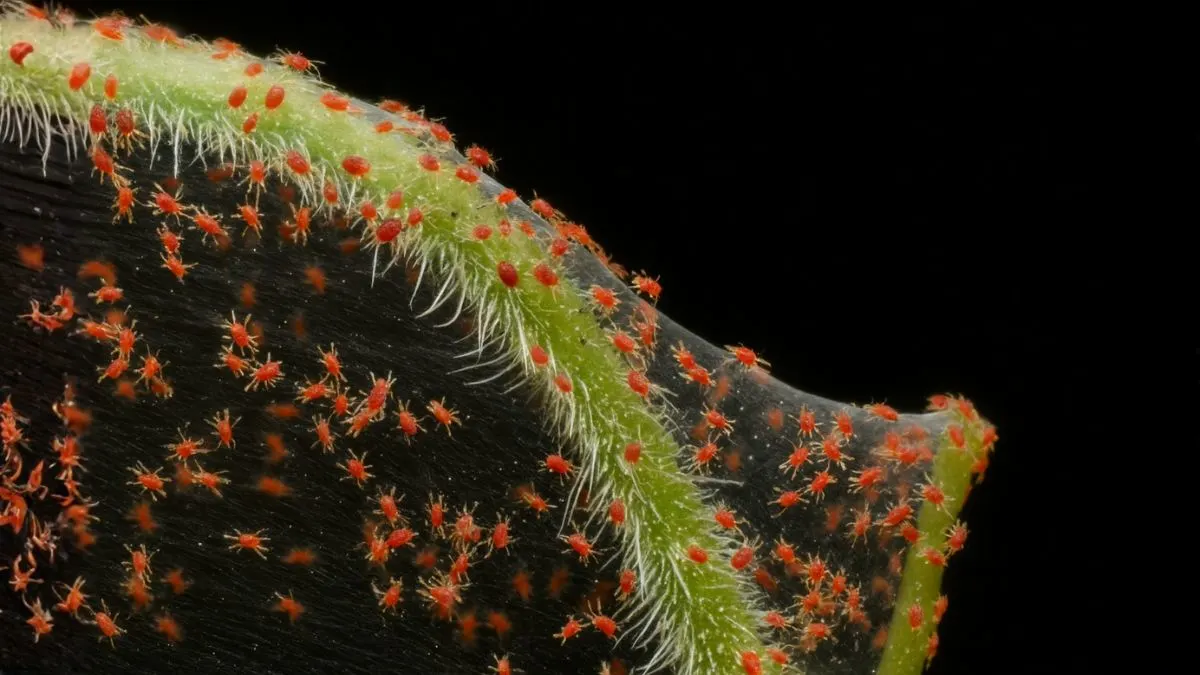Spider mites are some of the most annoying pests for gardeners and houseplant lovers. These microscopic critters are almost invisible to the naked eye, but your plants will know they’re there once you see the damage they cause. The good news is they can be effectively managed and your plants saved, if you take the right approach.
In this comprehensive guide, I’m going to show you how to get rid of mites on plants with water, pruning, and natural solutions like neem oil or alcohol-based remedies, so you can finally remove these pests.
Reasons Spider Mites Can Be an Issue

They are plant sap suckers that feed on the moisture in leaves, causing:
- Tiny yellow or brown spots on leaves
- Indumentum on the lower leaf surface
- Wilting or curling foliage
- Slowed growth and reduced yields
When left untreated, infestations spread quickly in your garden or indoor plants.
Step 1: Identify the Infestation
Before you treat, confirm you have spider mites. Look for:
- Fine webs near leaf veins
- Dust-like movement on leaves
- Leaves turning pale or speckled
Test: Place a white sheet of paper under a leaf and tap. If you see moving dots, you’ve got spider mites.
Also Read: Ghost Plants Are Real—And They’re Hauntingly Beautiful!
Step 2: Immediate Measures to Contain Spread
- Quarantine the plant to stop spread.
- Prune heavily infested leaves. This reduces mites and encourages new growth.
Step 3: Wash Away the Pests
- Hose off with water or wipe with a damp rag.
- Put the plant in a sink, shower or outdoors.
- Blast with a forceful water stream.
- Repeat every couple of days.
Gentle Method: For tender plants like prayer plants and orchids, use a moist cloth.
Step 4: Effective and Natural Treatments
- Neem Oil Spray
- Neem oil is one of the best natural remedies.
- Mix neem oil with water and spray.
- Acts as a miticide by suffocating mites and disrupting life cycle.
- Apply weekly until mites are gone.
- Insecticidal Soap or Horticultural Oil
- Safe, non-toxic solutions.
- Smother pests without toxic residues.
- Rubbing Alcohol Solution
- Mix 1 cup rubbing alcohol in 1 gallon water.
- Spray or wipe leaves with cotton ball.
- Alcohol kills mites on contact and dries eggs.
- Test on small leaf first.
Also Read: Petunias: The Flower That Turns Any Balcony Into a Blooming Paradise
Step 5: Long-Term Prevention
Spider mites love hot, dry weather. To prevent:
- Mist plants to raise humidity.
- Ensure airflow with fans/windows.
- Check new plants before bringing them inside.
- Wipe leaves with a wet cloth regularly.
Personal Experience With Spider Mites
Two summers ago, my indoor gardenias were infested with spider mites. Leaves faded, webs appeared. I tried only water, but they returned. Switching to neem oil + pruning brought recovery within weeks.
Lesson: It takes a one-two punch — wash, spray, and follow up.
Treatment Methods at a Glance
Method |
How It Works |
Notes |
Mist water |
Humidity drives mites off |
Repeat often |
Trim plants |
Remove affected leaves |
Dispose outside garden |
Neem oil spray |
Smothers mites, breaks life cycle |
Apply weekly |
Insecticidal soap / oil |
Natural suffocant |
Non-toxic |
Alcohol solution (1:4) |
Kills mites on contact |
Test on leaves first |
Also Read: Football Lily: The Explosive Flower That Blooms Like Fireworks!
Spider Mite Resistant Plants (and Vulnerable Ones)
While spider mites attack many plants, some are especially vulnerable:
- Prayer Plant – Large leaves attract mites in low humidity.
- Lupins – Prone during hot weather.
- Guduchi Plant – Can weaken under attack.
- Hawthorn Plants – Leaves easily infested.
- Redbud Trees – Saplings most vulnerable.
- Celery – Outdoor crops easily attacked.
- Amaranth – Large leaves = mite magnet in summer.
Spider mites are tough, but not unbeatable. First, separate the plant. Then wash, spray with neem oil, insecticidal soap or horticultural oil. Try DIY remedies like alcohol solutions or repeated water spraying.
The secret is consistency: keep treating, prune when needed, and monitor plants closely. With patience, your plants can rebound completely.






